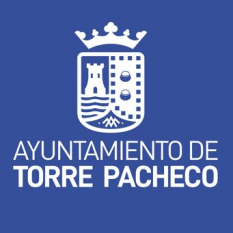Blog
»
{{catList[367].label}}
» Francisco Salzillo
Francisco Salzillo

Picture: Wikimedia Commons
Francisco Salzillo y Alcaraz was an outstanding sculptor, recognized for being a great representative of the art of the 18th century and especially of the Baroque, focusing on religious themes and knowing how to convey his style with the transformation of Rococo and Neoclassicism.
He was born on May 12, 1707 in Murcia. His father was Nicolas Salzillo, an Italian from Santa Maria Capua Vetere, in the province of Caserta, a sculptor and image-maker whose workshop sparked Francisco's passion for art and sculpture. His mother was Isabel Alcaraz from Murcia.
Artistic origins
He was baptized in the Parish Church of Saint Catherine, the second of seven siblings and the first boy. Some of them, like Jose Antonio, Patricio and Ines, worked with him in his father's workshop.He began his studies in literature with the Jesuits and entered the Dominican Order as a novice, but in 1727, due to the death of his father, he had to take charge of the workshop when he was only 20 years old. He received training in the art of painting with the priest Manuel Sanchez.
In the family workshop, his sister Ines was in charge of gilding and stewing the images made. She married Juan Vallejo y Taibilla, with whom she had two children: Nicolas and Maria Fulgencia.
In the family workshop, his sister Ines was in charge of gilding and stewing the images made. She married Juan Vallejo y Taibilla, with whom she had two children: Nicolas and Maria Fulgencia.
After the death of his mother in 1745, when he was almost 40 years old, he married Juana Vallejos, daughter of a silversmith and jury from the city of Murcia. Francisco Salzillo y Alcaraz did not like to travel, to the point of rejecting a job offer made by the Count of Floridablanca to work in Madrid. It would have been an opportunity to make himself known more quickly throughout the country.
Professional achievements
In sculpture, he proved to be a master of colour, displaying the dual status he possessed as a sculptor of painting and a painter of sculpture. His works were based on the study of nature.In 1755, he was appointed official sculptor of the Council of Murcia and inspector of painting and sculpture. After the death of his wife in 1763, he began meeting with other Murcian artists and intellectuals, creating, together with them, the Royal Economic Society of Friends of the Country, which later served to found the Patriotic School of Drawing in 1779.
Salzillo died on March 2, 1783 and was buried in the disappeared Convent of Capuchins of Murcia.
Currently, in the Salzillo Museum, the most representative works of his are exhibited, such as "Bethlehem" and the eight procession steps "Good Friday" in the so-called Salzillo procession, in addition to his iconographic models, such as his Crucified, Sorrowful, Immaculate, together with his Virgins of Anguishes and his Holy Families and his famous angels or children of Passion.
On the other hand, in the second room, there are works on the tribunes of the church of Jesus. In addition, the history of the brotherhood is told with a collection of engravings, paintings, gold and silver work, clothing and oratory images. There are also works on the robes of the Nazarene and the Dolorosa, designed by Francisco Salzillo y Alcaraz.
Activities in the region of Murcia
Share Article
More Articles











